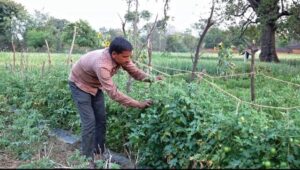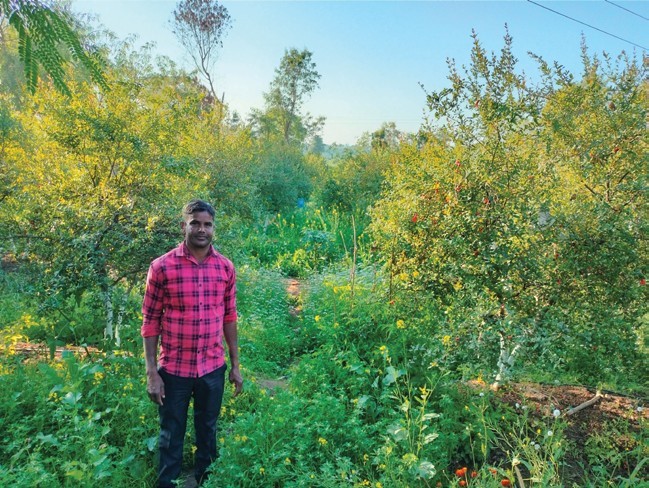While a lot of research has strengthened the case for spreading natural farming, a practical factor which has hindered its spread in India is that several farmers find it difficult to take up production of organic manures and pest-repellants for self-use, even though all the raw material is available within their home or neighbourhood.
In the most commonly used natural farming practices in India, organic soil nutrients (solid and liquid) are made using cow dung and cow urine with some jaggery and gram flour thrown in, these being mixed and stored for a certain number of days while organic soil-repellants are generally prepared in the form of concentrated sprays based on leaves of certain plants which are known to keep away pests. Ideally a natural farmer would be preparing this for self-use, but many find this difficult and so this becomes an inhibiting factor.
One way of overcoming this is for a few local farmers to assume the role of ‘natural farming entrepreneurs’ by taking up production of organic nutrients and pest-repellants on a commercial scale so that it can be sold to other farmers of this village who need this in ready-made form.
An effort to spread natural farming based in Tikamgarh district (MP) which is fast spreading to other districts of Madhya Pradesh and Uttar Pradesh and some other places as well has placed a lot of faith in several such natural farming entrepreneurs who are known for their deep commitment to natural farming. Bio-Resource Centres have been set up with the help of such natural farming entrepreneurs more commonly called Prakriti Shiksha Kendra or natural farming centre by villagers) in several villages.
 Farmers turn to organic farming in Bundelkhand
Farmers turn to organic farming in Bundelkhand
Recently, I visited one such center in Lidhaura Tal village managed by a natural farming entrepreneur Balchand Aharwal. Near the entrance there is a cow shed where the urine flow gets collected in a tank. On the other side, there are farming tools like power tillers and sprayers which can be hired on daily basis. The various forms of organic nutrients made are displayed along with a rate list. Even after considering that a higher quantity of organic nutrients may be required for per acre use compared to chemical fertilizers, the cost of the organic nutrient works out to about one-third. In the case of the organic pest-repellant the cost is drastically less compared to chemical pesticides used. This includes a reasonable return for the entrepreneur. Thus, farmers who opt for organic soil nutrients save money, get sustainable benefits, protect environment, and the money spent remains within his village. Although a new initiative, Balchand has so far sold organic soil nutrients and pest-repellants worth ₹60,000. If the government subsidises these organic nutrients over chemical fertilisers, both farmers and farming entrepreneurs can benefit significantly.
Further, traditional seeds of diverse varieties collected from in and around the village are stored. Then there is a newly constructed room for conducting training in natural farming. Beyond this there are fields of natural farming of food grains and legumes, as well as vegetable garden and orchard.
Such a centre can thus become pivotal in learning about natural farming as also in procuring ready material. The senior activist observes that as the number of abandoned cattle roaming around is very high in Bundelkhand region and it should be easy to use them for getting soil-nutrients – individually or by a centre — while also taking care of them.
Women farmers have played key role and special attention is given to ensure adequate representation to those from weaker sections. They have been found to be receptive to natural farming as these methods are cost-effective and make them self-reliant at a time when people are emerging from Covid lockdowns.
These efforts are being strengthened at the level of farmer producer organisations as well as by more articulate rural women like Varsha Patel, who has emerged as the CEO of the Ken-Betwa farmer producer organisation. She says: ‘Awareness of health related and other benefits of natural farming is increasing and hence there is higher acceptability for this method among women. The fact that the efforts are largely woman-led; makes it all a significant force of social change. Also, these contribute in climate change adaptation and mitigation, apart from reducing economic burden.


